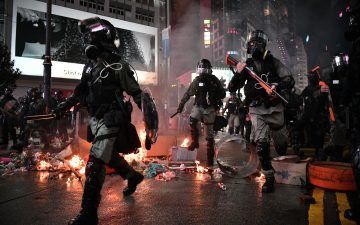 Antonia Malchik in Aeon:
Antonia Malchik in Aeon:
One evening in 1992, my parents, younger sister and I sat on the fold-out futon on the living room floor, petting our cats and watching fires consume buildings in Los Angeles. The images that spilled from the screen are only vague memories now: a dark night, broken windows, police sirens echoing, people rampaging across the city and leaving destruction in their wake. I was 16 years old. Having mostly grown up in small-town Montana without access to cable television, this was one of my first experiences watching a national news story on live TV.
The event we were watching, often called the LA riots, was triggered by the acquittal of police officers who had been filmed beating a construction worker named Rodney King. The eruption took its place in a long line of other violent uprisings against racial and gender injustice – the Watts riots, the Stonewall riots, and the 12th Street riot in Detroit. In my little hometown, TV viewers were prompted to view such riots through the lens of irrational ‘crowd contagion’ – a long-debunked perspective that nonetheless pervaded the media coverage in the first days of the LA event, until deeper analysis reflected on the searing racial tensions, inequality and poverty that triggered the uprising.
More here.
